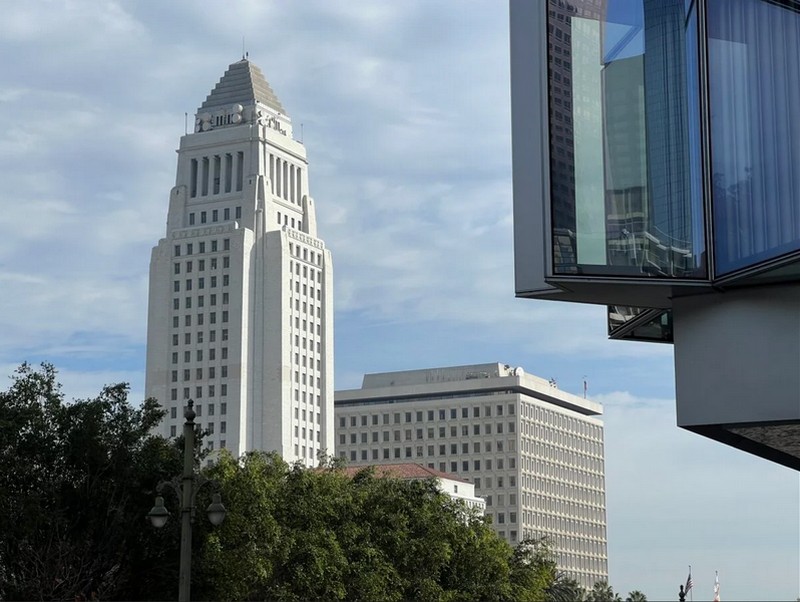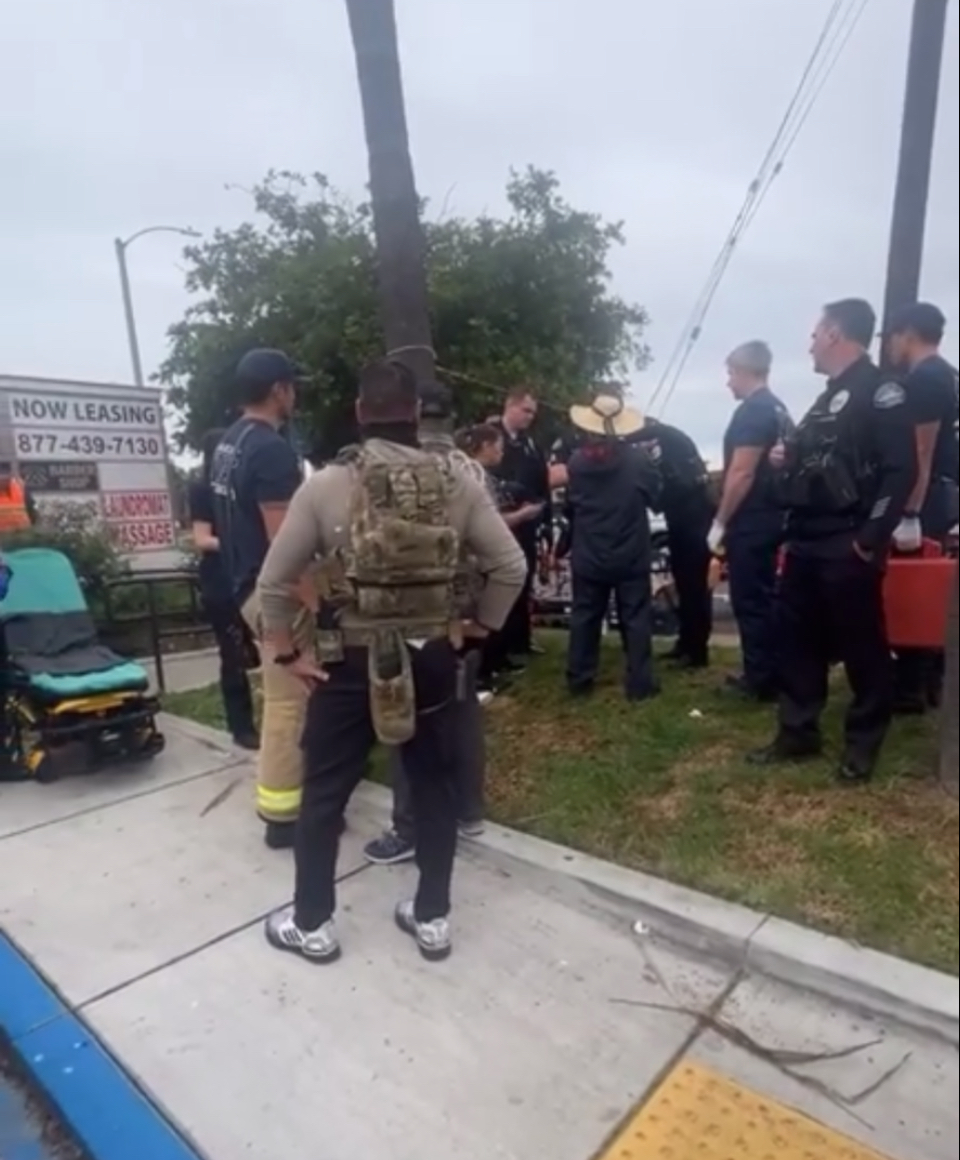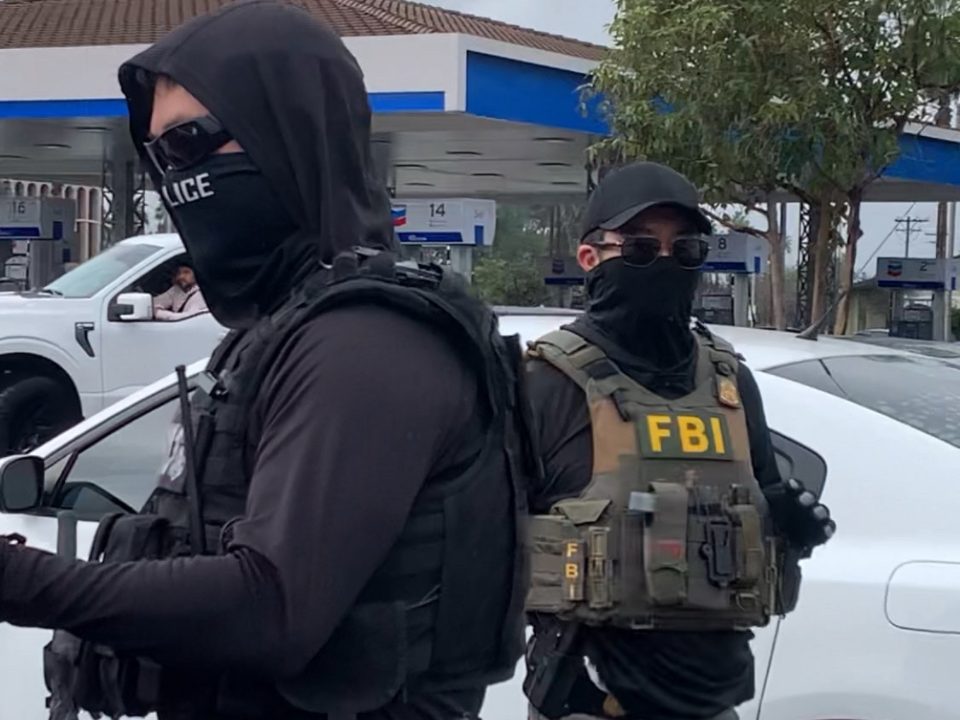This article was originally published by LA Public Press, and is republished here with permission.
LA Mayor Karen Bass’ Inside Safe program launched 18 months ago, but has failed to permanently house most of its participants, according to a scathing report released this week by mutual aid groups around Los Angeles.
Over the course of the program, more than 2,700 people were taken from encampments throughout the city and placed into motels. The report includes survey responses from 56 Inside Safe participants at nine different sites who report being isolated for months in their rooms, lacking access to services and experiencing long delays in getting assistance to begin finding housing.
Paisley Mares, a member of one of the mutual aid groups Aetna Street Solidarity, says the report was put together by groups “from across the city who work directly on the ground with people who have been directly affected by Inside Safe.”
“Our communities have been approached and displaced by Inside Safe,” Mares said. “We’ve been able to see over real time the true effects of what’s been happening.”
Mares, who lives in an RV and puts out a news show, R.V. T.V., said that his hope for participating in this effort was to “provide an alternative to a narrative that is being pushed by the city or state.”
“I hope it raises awareness amongst the people, among the general public, amongst taxpayers both housed and unhoused, so people have a better understanding of what’s actually going on and be moved to take some action and see some results,” Mares said.
The report also highlights city data that reflect minimal success by the city in getting people permanently housed through Inside Safe, and point to the $341 million costs of the program, attributed to figures from the Los Angeles City Controller.
One key issue: the majority of people city officials count as being housed through Inside Safe are really only being housed temporarily.
The city’s figures show that more than half of the people that the city counted as being housed were placed with the assistance of a short-term funding assistance program, known as “time-limited subsidies.” These work by placing clients in a housing unit where their name is on the lease, and subsidizing their rent for, typically, 12 to 24 months after placement. Inside Safe housed slightly more than 500 people, and more than half of this group of people, 57%, were moved out of the motels under such time-limited subsidy programs, according to numbers sourced originally from the Los Angeles Homeless Services Authority (LAHSA).
LAHSA labels such “time-limited” programs as a form of “permanent housing,” but also describes it as being temporary: “As the name states, these programs provide support to households experiencing homelessness by assisting them in accessing permanent housing quickly and for a limited amount of time.”
Many of the respondents also reported poor upkeep of the facilities and inferior food quality. They also reported being placed into prison-like conditions that became increasingly more so as time went on, with rules getting stricter.
Some of the responses featured in the report include:
- “The case managers are unprofessional. I’ve had five different case managers because there’s so much turnover.”
- “They made me change rooms multiple times for no reason even though no one new moved into my old room. The staff comes into my room while I’m sleeping.”
- “The new management is mean and cruel. They laughed in my face when I asked for help. So many people get kicked out all the time now, it’s not right.”
- “They never talk to us about housing. They don’t treat us like human beings.”
During a recent visit to an Inside Safe site by an LA Public Press reporter to interview program participants, a security guard shooed her off the premises. He pointed at a list of rules on a door that said “no visitors allowed at any time” and “clients are not allowed to go into each others’ rooms.”
One of the participants, Cherel, who walked out to talk to the reporter said she was placed at the motel eight months ago. When asked about the progress of getting housed, she described it as “no, or slow.”
“We have a case manager who all of a sudden got fired or she left,” Cherel said. “We don’t even know. Nobody here has even informed us of her leaving or of anything happening on their end on that. Nobody is keeping up with if we’re going to get our documents, nobody is keeping up with that.”
The report presents data that show that the majority of people they surveyed in the program have not received housing vouchers (more than 85%); say they have never received mental health support (75%) even though many reported suffering from anxiety, depression and poor mental health; and seen rules at their Inside Safe shelter become more strict and prison-like (59%) during their time in the program.
The report also points out statistics, based on figures provided in city reports, that show that nearly 900 people have exited from Inside Safe programs, and 44 people have died.
The report also calls for the following solutions: raising the minimum wage, passing a rent freeze and halting evictions; repealing the city ordinance LAMC 41.18, which bans camping and end sweeps of encampments; to “stop banishing and criminalizing people for being poor;” and to invest in public housing, including social housing.
LA Public Press reached out to the Los Angeles Mayor’s office for a response, but received none.
The groups involved in putting together the report do mutual aid in communities throughout Los Angeles, including the San Fernando Valley, the South Bay and Hollywood communities. They comprise of Palms Unhoused Mutual Aid, Mar Vista Voice, Fairfax Mutual Aid, Aetna Street Solidarity, South Bay Mutual Aid & Care Club, Food for Comrades Free Food Collective and LA Street Care, which also supports the Housing for Juanita campaign.
Their members describe themselves as people who offer mutual aid, often in the very neighborhoods where many of them grew up, to neighbors who also have grown up there or make the area their home.
They regularly visit and support communities who are unhoused, hold regular community nights where they connect people to public services and aid including Narcan and outreach workers, organize communities to advocate for issues that are important to them with their elected officials, bring health and medical staff. In many instances, they have created memorials to remember their community members have died outside.
Carla Orendorff, also with Aetna Street Solidarity, says they have watched their community on Aetna Street in Van Nuys get pushed out and dispersed. Since the Inside Safe last September, several people have died after being separated from their community. The street was fenced up the same week of the operation. Now they hold their community nights closer to the Inside Safe motels, and also travel to new encampment locations to distribute food. She noted that hunger had previously been less of an issue at Aetna Street, but is now a challenge for many of the people pushed off of that street.
“We wanted to challenge people at every level, to push back … not let politicians get away with things,” Orendorff said.
She said that there is a needless discounting of people’s ability to create a functional community and support system for each other outside, and their ideas for how programs like Inside Safe could be better run.
“There is no reason for [public officials and service providers] not to actually learn,” Orendorff said. “It requires listening. It’s discounting people for what they bring. It makes their work impossible. It pits you against the people you’re serving. It’s such an abusive relationship, and it doesn’t have to be at all.”







